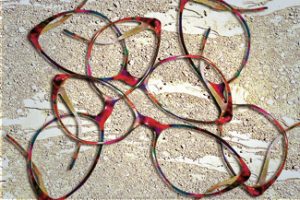Digital lenses were first created in the early 2000s, and are now readily available for all different types of prescriptions.
What if your vision could be upgraded to high-definition?
Think back to the first time you saw HD-TV or when you bought the latest computer screen?
Remember how it made your old images seem dark and blurry? Colors were brighter, shapes were clearer, and everything was sharply in focus thanks to high-definition. Imagine going through the same thing with your spectacles.
Sure, you can probably see OK with the ones you have, just as you could when analog TV was all you had.
Q1: What are digital lenses?
Digital lenses are optical lenses that have been digitally altered to provide a significant improvement in clarity over standard lenses. When the digital lens is combined with an anti-reflective coating, the clarity improves.
Q2: How do digital lenses help my vision?
Sharper image quality, stronger peripheral vision, and improved contrast sensitivity are all advantages of digital lenses.
Q3: Is there a difference between digital lenses and free-form lenses?
Lenses that use the digital technique are referred to as digital lenses, high resolution lenses, and free-form lenses.
Contact an eye doctor near you to discuss digital lens options for your glasses.
SEE RELATED: Optical Lenses
Q4: How are digital lenses made?
Traditional lenses have only one side of the lens surfaced, and the patient’s best vision is in the center. Since a digital lens is personalized to the patient’s prescription in such a precise manner, which is why it’s often referred to as free-form. In fact, compared to 0.125 to 0.25 D increments of conventional eyeglass lens machining, free-form technology can surface lenses in power increments of 0.01 diopter (D).
Q5: Do they make them for any type of lens— bifocal, trifocal, progressive, etc.?
Single vision, lined bifocals, and progressive lenses are all created with digital lenses. Digital lenses can help people with any prescription. The largest difference will be noticed by patients with higher prescriptions and all progressive lens wearers.
Q6: Why are digital lenses important?
Many distortions that were unavoidable with traditional lens surfaces are eliminated with digital lenses. They’re six times more precise than regular lens surfaces and give patients up to 20% more vision channels for intermediate and close distances. Digital lenses come in a variety of styles to suit patients’ preferences, including hobby, sport, computer and reading lenses.
Q7: Who are good candidates for digital lenses?
Everyone can benefit from the precision of a digital lens prescription, but those with high prescriptions and large amounts of astigmatism will notice the most change. Digital lenses will assist progressive lens wearers the most since they provide a wider field of vision and eliminate the ‘follow-the-nose’ technique.
Interested in upgrading to digital lenses? Schedule an appointment with an eye doctor near you.
HD TV makes colors brighter, shapes clearer, and the screen is more sharply in focus – enhancing your TV viewing.
Imagine having this same experience with your eyeglasses!









